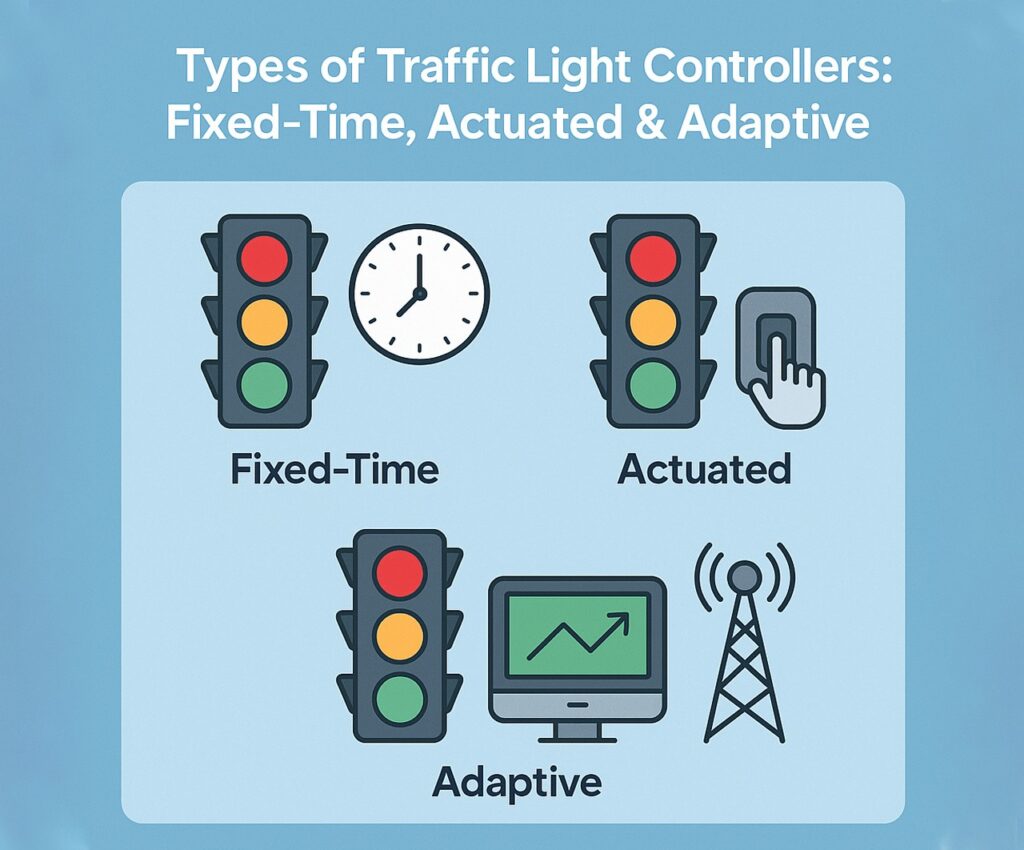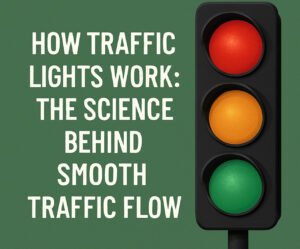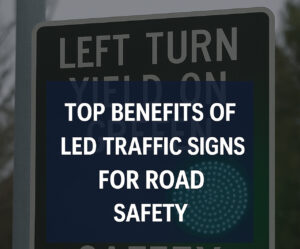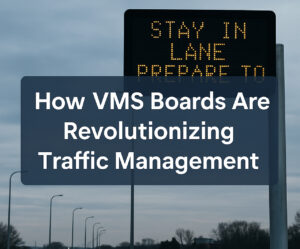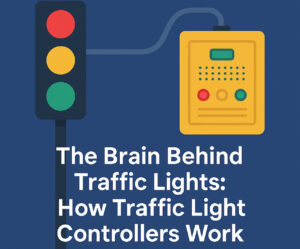Modern traffic systems depend on smart coordination to maintain flow, ensure safety, and reduce congestion. Central to that coordination is the traffic light controllers. These controllers determine how and when signals change—and they’ve evolved far beyond basic timers. In this article, we’ll explore three main types: fixed-time, actuated, and adaptive systems.
We’ll also incorporate three widely searched, high-traffic keywords: mechanical traffic light controller, programmable traffic light controller, and rs10 traffic light controller. These keywords not only guide search traffic to this article but also highlight the importance of knowing your options before investing in traffic control technology. Know more..
What Is a Traffic Light Controller?
At its core, a traffic light controller is a device that governs signal operations at intersections. It determines how long each light stays green, yellow, or red based on preset or real-time logic. While the basic purpose hasn’t changed much, the technology has significantly advanced, making way for greater precision and adaptability.
Why Choosing the Right Controller Matters
Not every intersection needs cutting-edge tech. In some areas, a mechanical traffic light controller might still be sufficient. In others, high-traffic intersections benefit immensely from programmable traffic light controllers or advanced systems like the rs10 traffic light controller, which use algorithms to optimize signal timing in real-time.
Let’s break down the three main types.
Fixed-Time Controllers: Reliable Simplicity
Fixed-time controllers operate on a consistent, repeating schedule. Think of them as the most basic form of traffic management. These controllers don’t respond to traffic volume—they just follow a preprogrammed sequence.
When to Use Fixed-Time Controllers
- Low-traffic intersections
- Urban grids with synchronized timing
- Areas with consistent traffic flow
Pros
- Simple to implement
- Predictable timing
- Low maintenance
Cons
- Can lead to unnecessary delays when traffic is light
- No responsiveness to real-time conditions
Example: Mechanical Traffic Light Controller
The mechanical traffic light controller is a classic example of this type. These devices rely on gears, cams, or switches to trigger light changes. While outdated for busy areas, they still work well in towns with low or consistent vehicle flow. They’re also cost-effective and easy to maintain.
Actuated Controllers: Smarter Timing
Actuated controllers adjust signal timing based on actual traffic conditions. Using inputs from sensors or cameras, these systems detect approaching vehicles and modify signal timing accordingly.
There are two types of actuated controllers:
- Semi-actuated – Only the minor road is monitored; the main road has a fixed green unless cross-traffic is detected.
- Fully-actuated – All approaches have sensors, and the system dynamically adjusts every cycle.
Pros
- Responsive to real-time demand
- Reduces idle time and unnecessary delays
- Enhances flow during off-peak hours
Cons
- More expensive than fixed-time systems
- Requires ongoing maintenance for sensors and detection systems
Example: Programmable Traffic Light Controller
A programmable traffic light controller falls into this category. It allows traffic engineers to customize parameters for traffic light behavior, making it ideal for intersections with moderate to variable traffic patterns. These systems often include microcontrollers or PLCs that can be reprogrammed as conditions change.
These controllers are excellent for:
- Suburban intersections
- Areas near shopping centers or schools
- Corridors with fluctuating daily traffic volumes
Adaptive Controllers: Real-Time Intelligence
Adaptive traffic control systems (ATCS) are the most advanced. They don’t just react to vehicles—they analyze patterns, predict congestion, and modify traffic signal timing in real-time using complex algorithms.
How It Works
Adaptive systems integrate a network of detectors, cameras, and processors to collect data across multiple intersections. This data is then analyzed centrally or locally to adapt signal phasing and timing based on current and predicted traffic flow.
Pros
- Maximizes efficiency across entire corridors
- Responds to incidents, congestion, and time-of-day patterns
- Provides the best balance of throughput and safety
Cons
- High initial cost
- Requires a central control system and skilled operators
- Complex installation and integration
Example: RS10 Traffic Light Controller
The rs10 traffic light controller is an industry-standard example of adaptive control. It is designed for scalable use in urban traffic systems and supports both actuated and adaptive strategies. The RS10 can integrate with real-time traffic management platforms, support remote access, and even incorporate AI-based logic.
These controllers are perfect for:
- Metropolitan intersections
- High-density corridors
- Smart city infrastructure
Comparing the Controllers
| Feature | Mechanical Controller | Programmable Controller | RS10 Adaptive Controller |
| Responsiveness | Low | Medium | High |
| Cost | Low | Moderate | High |
| Installation Complexity | Simple | Moderate | Complex |
| Maintenance Needs | Low | Moderate | High |
| Scalability | Minimal | Medium | High |
| Best Used In | Small towns, fixed cycles | Suburbs, variable traffic | Cities, dynamic traffic patterns |
Key Considerations When Choosing a Controller
- Traffic Volume – High-traffic areas require adaptive or at least programmable systems.
- Budget – Mechanical controllers are affordable but limited. Adaptive controllers are an investment.
- Future Growth – Choose a controller that supports scalability and integration with smart infrastructure.
- Maintenance Capabilities – Consider the availability of trained technicians for upkeep.
- Integration Needs – Some locations may need traffic coordination with nearby signals, emergency vehicle preemption, or pedestrian safety features.
Emerging Trends in Traffic Control
As urban areas grow and smart cities expand, traffic control is evolving. Here are some trends that are shaping the future:
1. AI-Powered Signal Optimization
Adaptive systems like the rs10 traffic light controller are now using AI to detect patterns, predict congestion, and even account for weather conditions in real time.
2. Cloud-Based Management
Programmable traffic light controllers are increasingly integrated with cloud platforms, enabling remote updates, diagnostics, and real-time performance monitoring.
3. Integration with Public Transit and Emergency Services
Modern systems prioritize buses and emergency vehicles by adjusting signal timing to clear intersections ahead of arrival.
4. Sustainable Infrastructure
Systems are designed to reduce idling, improve fuel efficiency, and lower carbon emissions—important for cities looking to meet climate goals.
Real-World Applications
Example 1: Suburban Expansion
A suburb transitioning from stop signs to signalized intersections might start with programmable traffic light controllers. These provide flexibility as traffic increases and patterns become more complex.
Example 2: Urban Smart Zones
In downtown corridors where congestion changes by the hour, the rs10 traffic light controller offers adaptive control that keeps traffic moving efficiently and safely.
Example 3: Small Town Cost Savings
A town with limited traffic might benefit most from a reliable mechanical traffic light controller, offering decades of use with minimal maintenance.
Final Thoughts
Traffic light controllers are not one-size-fits-all. Whether it’s a mechanical traffic light controller for a quiet intersection, a programmable traffic light controller for an expanding community, or an advanced rs10 traffic light controller for a high-tech urban zone, choosing the right type can make a major difference in safety, efficiency, and cost.
Understanding how each system functions—and matching it to your needs—ensures better flow and happier drivers. With rising traffic volumes and growing infrastructure demands, the value of an intelligent, well-chosen controller has never been higher.

